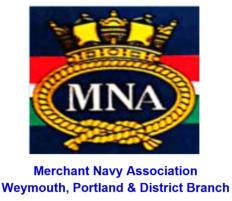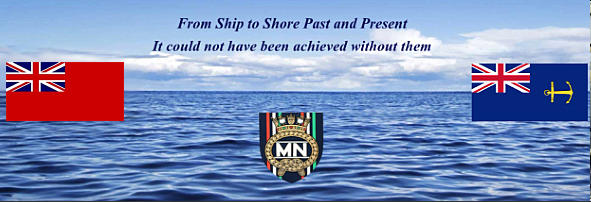Dedicated: 1 October 2003
Commemorates: Over 46,000 British merchant
seafarers and fishermen lost in conflict during the
20th Century, including two World Wars, Falklands,
Kuwait, Vietnam, Iran, Iraq and others.
31,908 seafarers perished in World War II,
proportionately more than any of the Armed
Services. 2,535 trees represent the British vessels
lost at that time.


MERCHANT NAVY MEMORIALS


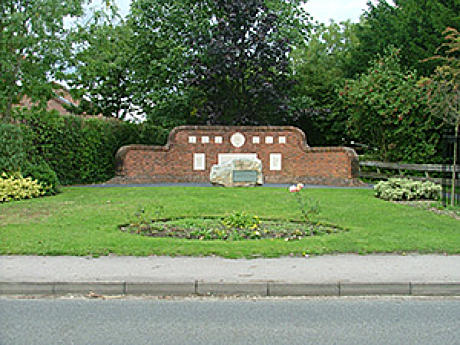
Dedicated to the memory of the men of the Royal Fleet
Auxiliary who lost their lives in action in the South Atlantic in
1982 in defence of the freedom of the Falkland Islands and
dependencies.
The Merchant Navy Memorial Trust chose Leith for a new memorial as it was Scotland's premier port for more than 300 years and
served as Edinburgh's trading port for more than 700 years.
A campaign to raise £180,000 was kick started in April 2010, having stalled at £125,000. After putting out a public appeal, the
remaining cash was swiftly raised and the monument was officially unveiled on the 16th of November.
It was designed by artist Jill Watson and made at Powerhall Bronze. With its finely detailed depictions of seafaring life, the
memorial also aims to recognise the 132 years of service dedicated to the Merchant Navy by Leith Nautical College between 1855
and 1987 with its training ship, the Dolphin.
The monument, which is faced in light-coloured, grained Beryl sandstone, has four distinct tiers and four sides and each of the
panels bears a bronze relief – being manufactured locally at Powderhall foundry – designed by the sculptor to tell at least some of
the story of Scotland’s relationship with the sea.
Those distinctive figures are, therefore, present, on a shelf at somewhere a little over a metre off the ground: a child’s eye level.
There it will be possible to see navigators with charts, a ship’s cook, stokers, engineers, and seamen hauling lines. Below them a
life ring, floating, tiny on a vast sea, was the universally suggested symbol for the loss of life that the work commemorates.
That story was not enough in 2010, however, and the trust determined that the sculpture must have elements that referred to
seamanship in peacetime as well, when, as in many potentially dangerous professions, lives are lost. So while one level of
Watson’s work concentrates on the war years with geographical information, a fleet in convoy formation and the outlines of flying
boats, the level above attempts nothing less than a history of shipping. Here, careful to respect the extensive knowledge of
everyone in her commissioning body, Watson can happily date each vessel depicted by the style of its bow. From pre-Clipper
sailing ships, via transatlantic steamers, the history of the Scottish merchant fleet progresses to the state-of-the-art drill ship Ben
Ocean Lancer, built by Scotts of Greenock and launched in 1977.




At the outbreak of the Second World War, it was evident that the Royal Navy would not
be able to man all the auxiliary vessels that would serve with it. To deal with the
shortfall in manpower, a number of officers and men of the Merchant Navy agreed to
serve with the Royal Navy under the terms of a T.124 agreement, which made them
subject to Naval discipline while generally retaining their Merchant Navy rates of pay
and other conditions. The manning port established to administer these men was at
Liverpool.
More than 13,000 seamen served under these conditions in various types of auxiliary
vessels, at first mainly in armed merchant cruisers, but also in armed boarding vessels,
cable ships, rescue tugs, and others on special service.
The Liverpool Naval Memorial commemorates 1,400 of these officers and men, who
died on active service aboard more than 120 ships, and who have no grave but the
sea. The great majority of Merchant Navy men, who did not serve with the Navy but
with merchant ships, are commemorated on the Merchant Navy Memorial, at Tower Hill in London.
The memorial was designed by C. Blythin and S.H. Smith and was unveiled by the Admiral of the Fleet, The Viscount Cunningham
of Hyndhope, K.T., G.C.B., O.M., D.S.O., on the 12th November 1952.
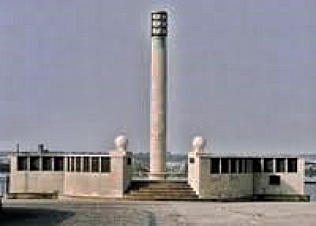

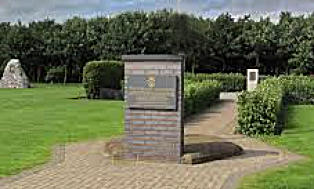
The seated figure of navigator on tall column with symbols of merchant navy around base.
Cywaith Cymru: 'The idea to commission a memorial to the merchant seamen of Newport
grew out of a feeling in the town that the role that the merchant navy played in both World
Wars had not been properly recognised. Jim Blackborow, an ex-seaman, started a campaign
to provide a memorial and to raise funds towards its cost which helped bring the desire for a
memorial to the council's attention. A limited competition was set up by the Welsh Arts Council
Commissions Service which resulted in the design which was accepted.
Information at the site states that the merchant navy memorial is by Sebastien Boyesen and
commemorates the long standing relationship between the merchant navy and the town of
Newport.

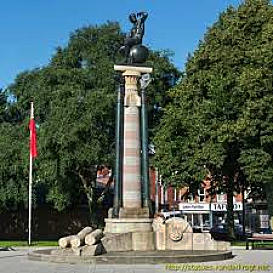

Merchant Navy Association
Merchant Navy Convoys


PROPOSED ‘BATTLE of the ATLANTIC’ MEMORIAL
A fundraising campaign has been started to build a memorial in Liverpool dedicated to the estimated 100,000 people who lost their lives during
the Battle of the Atlantic in World War Two, as well as those who served and survived. The planned 28 meter monument will be in the shape of a
merchant ship split in two. Each half of the two-piece structure is likely to weigh between 10 and 15 tons. They will be hollow with a stainless-
steel armature and bronze cladding. The design is the brainchild of acclaimed sculptor Paul Day whose works include the Battle of Britain
Monument and the Iraq-Afghanistan memorial, both in London.
The campaign is aiming to unveil the monument in 2019, the 80th Anniversary of the start of the battle and the beginning of World War Two.
The memorial will recognize the efforts of British and Allied Merchant Navies and Armed Forces including the U.S., Canada, Norway, the
Netherlands, Belgium, France, Poland, Brazil, Australia, New Zealand and Russia. In addition, the monument will also commemorate the
thousands of seafarers from around the world who served in Allied Armed Forces and Merchant Navies including India and China. Former
adversaries Germany and Italy will also be recognized, underlining the importance of peace.
The Battle
The Battle of the Atlantic was the longest campaign of World War Two. It began on September 3, 1939 and lasted until VE Day May 8 in 1945, in
total five years eight months and five days. The cost of the battle was extremely high for both sides. It is impossible to be sure how many died
but an estimated 26,500 British merchant seamen were killed while the Royal Navy lost more than 23,000 seamen. The allied war dead of naval
and merchant seaman is estimated at more than 20,000 from Canada, the U.S., India, China, Poland, Norway, Holland, Greece, Belgium, South
Africa, Australia, New Zealand and Russia. In total around 3,500 merchant ships were sunk and 15 million tons of allied shipping was lost.
Many thousands of civilians were also caught in bombing raids at ports and shipyards on both sides of the Atlantic. In Liverpool, for example, the
‘May blitz’ of 1941 saw 1,746 Merseysiders killed and 1,154 injured in eight nights of bombing. Meanwhile, the U-Boat memorial near Kiel has
the names of 28,000 crewmen who died, more than 60 percent of those who served. Of the 859 U-boats 648 were lost, across all seas in which
U-Boats operated.
The Battle of the Atlantic’s core was the Allied naval blockade of Germany, announced the day after the declaration of war, and Germany's
subsequent counter-blockade. It was at its height from mid-1940 through to the end of 1943. The Battle of the Atlantic pitted U-boats and other
warships of the Kriegsmarine (German navy) and aircraft of the Luftwaffe (German air force) against the Royal Navy, Royal Canadian Navy,
United States Navy and Allied merchant shipping.
The convoys, coming mainly from North America and predominantly going to the United Kingdom and the Soviet Union, were protected for the
most part by the British and Canadian navies and air forces. These forces were aided by ships and aircraft of the U.S. beginning September 13,
1941. The Germans were joined by submarines of the Italian Royal Navy (Regia Marina) after their Axis ally Italy entered the war on June 10,
1940.
As an island nation, the United Kingdom was highly dependent on imported goods. Britain required more than a million tons of imported material
per week in order to be able to survive and fight. In essence, the Battle of the Atlantic was a tonnage war: the Allied struggle to supply Britain
and the Axis attempt to stem the flow of merchant shipping that enabled Britain to keep fighting.
From 1942 onwards, the Axis also sought to prevent the build-up of Allied supplies and equipment in the British Isles in preparation for the
invasion of occupied Europe. The defeat of the U-boat threat was a pre-requisite for pushing back the Axis. The outcome of the campaign was
a strategic victory for the Allies - the German blockade failed - but at great cost: 3,500 merchant ships and 175 warships were sunk for the loss
of hundreds of U-boats.
The name "Battle of the Atlantic" was coined by Winston Churchill in February 1941. t has been called the "longest, largest and most complex"
naval battle in history. It involved thousands of ships in more than 100 convoy battles and perhaps 1,000 single-ship encounters, in a theater
covering millions of square miles of ocean. The situation changed constantly, with one side or the other gaining advantage, as participating
countries surrendered, joined and even changed sides in the war, and as new weapons, tactics, counter-measures and equipment were
developed by both sides. The Allies gradually gained the upper hand, overcoming German surface raiders by the end of 1942 and defeating the
U-boats by mid-1943, though losses due to U-boats continued until war's end.
The final victory in the Atlantic was assured by the American entry to the war. The U.S. was able to bring overwhelming military and industrial
muscle to the campaign with formidable contributions from the US Navy and its Hunter Killer Task Groups. Furthermore, the rapid production of
merchant ships in the U.S., mainly Liberty ships, was a key factor in the balance between those sunk and new replacements.
Canada too played a key role, by the end of the war it had more than 400 ships, almost half the North Atlantic escort force, an extraordinary
contribution from a country that could only boast six warships in 1939. In total, 1,600 Merchant Navy personnel from Canada and Newfoundland
were killed; one out of every seven Merchant Navy sailors who served was killed or wounded. The RCN and RCAF paid a high toll in the Battle
of the Atlantic. Most of the 2,000 RCN officers and men who died during the war were killed during the Battle of the Atlantic, as were 752
members of the RCAF

Artist’s Impression of Proposed Monument

The 13 ft-high (4 metre) memorial in the shape
of a ship’s bow is situated in Paragon Street,
close to the city's maritime museum. It honours
the lives lost at sea in peace and war and was
commissioned by the Merchant Navy
Association.
At the unveiling ceremony in November 2013
Councillor Stephen Brady, leader of Hull City
Council, said the £30,000 memorial was
"something I feel the city should have had long
ago" - a "reminder of the sacrifices and
contributions made to the city by the Merchant
Navy".
Eddie Piercy, chairman of Hull Independent
Merchant Navy Association, said the seamen's
contribution to the "wealth, culture and heritage
of Hull has been instrumental in giving the city
its own distinctive independent character."
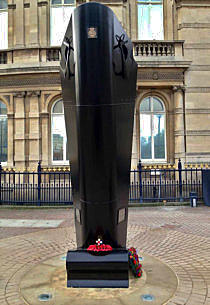

The anchors memorial is situated on Queen's Dock Avenue

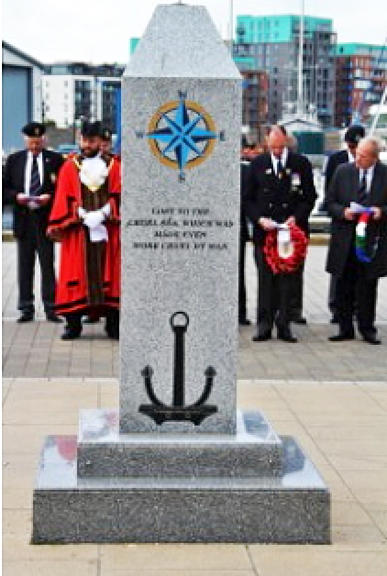
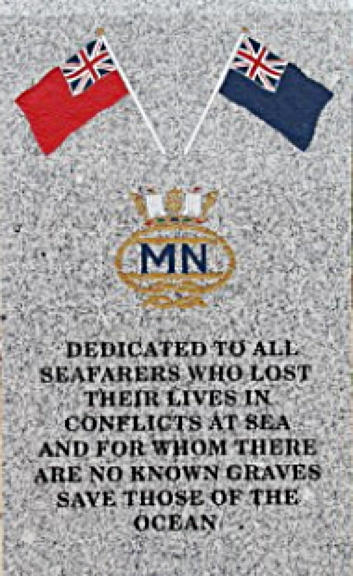

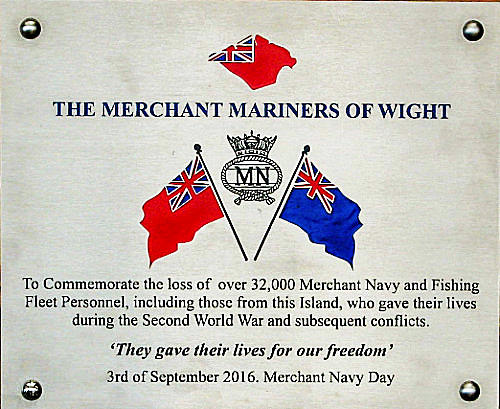
HISTORIC SHIPS


